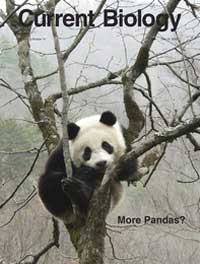Molecular censusing doubles estimate of key giant panda population

The giant panda is one of the world's most charismatic endangered species and has an emblematic status for the conservation movement worldwide. Its attraction stems in part from its elusive nature: A wary creature with an unusual dietary dependence on bamboos, it is now found only in a restricted mountainous region in China. These characteristics have also shielded important knowledge needed to save the panda from extinction.
Understanding population trends for giant pandas has been a major task for conservation authorities in China for the past thirty years, during which three increasingly sophisticated national surveys were carried out. The first two revealed alarming evidence for declines across the giant panda's range. However, the most recent survey, completed in 2002, showed the first evidence of a recovery, thanks largely to protection measures taken by the Chinese government, including support for a network of natural reserves and strictly enforced bans on poaching and deforestation.
Nonetheless, given the variable accuracy of traditional ecological census methods, other approaches to accurately estimating panda population size are needed. In the new work, the Chinese and UK researchers re-examined the ecological estimate for a key reserve population of giant pandas in Wanglang Nature Reserve. To boost the accuracy of their study, they used recently developed noninvasive techniques, including DNA sequence profiling from fecal samples, that have been successfully used for censusing wild animal populations. The researchers found that the most recent survey likely underestimated the giant panda population by more than 50%. Moreover, the population showed no genetic trace of a demographic “bottleneck” in the recent past, implying that the population may not have been diminished to such tiny numbers as commonly feared.
If these results were to be replicated in other key reserves (and the authors state that this is not unlikely), then there may now be many more giant pandas remaining in the wild than previously thought. This finding indicates that the species may have a significantly better chance of long-term viability than recently anticipated, and that this beautiful animal may have a brighter future.
Media Contact
More Information:
http://www.current-biology.comAll latest news from the category: Life Sciences and Chemistry
Articles and reports from the Life Sciences and chemistry area deal with applied and basic research into modern biology, chemistry and human medicine.
Valuable information can be found on a range of life sciences fields including bacteriology, biochemistry, bionics, bioinformatics, biophysics, biotechnology, genetics, geobotany, human biology, marine biology, microbiology, molecular biology, cellular biology, zoology, bioinorganic chemistry, microchemistry and environmental chemistry.
Newest articles

Sea slugs inspire highly stretchable biomedical sensor
USC Viterbi School of Engineering researcher Hangbo Zhao presents findings on highly stretchable and customizable microneedles for application in fields including neuroscience, tissue engineering, and wearable bioelectronics. The revolution in…

Twisting and binding matter waves with photons in a cavity
Precisely measuring the energy states of individual atoms has been a historical challenge for physicists due to atomic recoil. When an atom interacts with a photon, the atom “recoils” in…

Nanotubes, nanoparticles, and antibodies detect tiny amounts of fentanyl
New sensor is six orders of magnitude more sensitive than the next best thing. A research team at Pitt led by Alexander Star, a chemistry professor in the Kenneth P. Dietrich…





















